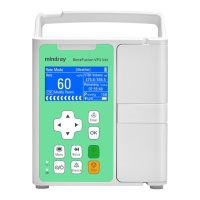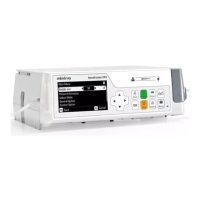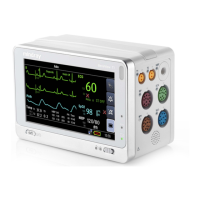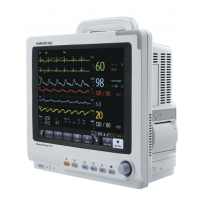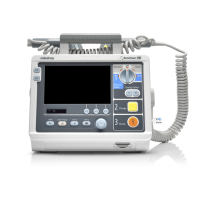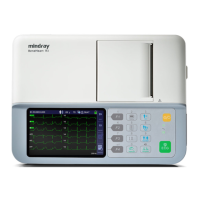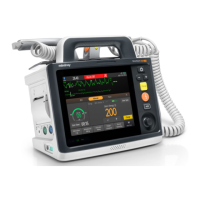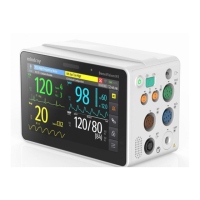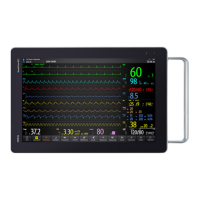Do you have a question about the Mindray BeneFusion eSP Vet and is the answer not in the manual?
Lists conditions not covered by the warranty.
Provides manufacturer and contact details.
Explains the manual's objective for safe operation.
Identifies target users for the manual.
States illustrations are examples only.
Defines text formatting conventions used.
Details warnings, cautions, and notes for safe operation.
Explains various symbols used in the manual and on the equipment.
Describes the primary purpose and application of the syringe pump.
Identifies the syringe as the applied part of the equipment.
Details the components and views of the main syringe pump unit.
Explains the different areas and information shown on the pump's display.
Outlines critical safety precautions before setting up the equipment.
Specifies the necessary environmental conditions for equipment operation.
Provides instructions for installing the syringe pump.
Guides through initial setup procedures for the pump.
Provides a concise overview of basic operational steps.
Details the steps for properly setting up the syringe pump.
Step-by-step guide on how to load a syringe into the pump.
Instructions on how to begin an infusion process.
Explains the procedure for purging the infusion line.
Covers the process of administering bolus infusions.
Instructions for attaching the pump to its docking station.
Details how to set up and manage sequential infusions using multiple pumps.
How to execute a pre-programmed patient prescription.
Describes batch configuration of pumps via the dock.
Critical safety guidelines related to the pump's alarm system.
Explains alarm priorities, indicators, and the alarm screen.
Procedure for acknowledging and resetting active alarms.
How to temporarily silence audible alarms.
Options for adjusting alarm volume and sound mode.
Information on connecting the pump to a nurse call system.
Table of common alarms, their causes, and troubleshooting solutions.
Lists the primary options available in the main menu.
Details settings for current pressure, occlusion, and KVO rate.
Covers settings for sound, brightness, history, and version information.
Describes infusion using rate or time parameters.
Explains infusion based on drug dosage calculations.
Details infusions with an initial loading dose.
For low-rate infusions, using rate, time, and VTBI.
Allows setting multiple parameter groups for sequential infusions.
Infusion with alternating high and low rate stages.
Infusion with gradually increasing or decreasing rates.
Infusion based on drug dose and time parameters.
Steps to load drug libraries onto the pump.
Explains safety features for drug libraries.
Setting default infusion modes within the drug library.
Procedures for managing patient data on the pump.
How to modify patient details.
Steps to save patient data to a USB drive.
How to load patient data from a USB drive.
How to enter the password-protected maintenance menu.
Settings related to facility, department, and device name.
Settings for displaying and editing patient data.
Procedures for calibrating the pump's accuracy and pressure.
Configuration for wireless network connections.
Managing compatible syringe brands.
Setting date, time, and language.
Enabling specific operational parameters.
Configuring units for pressure, weight, and height.
Displays software and library version details.
Configuration options for alarm sound.
Setting the unit for bolus volume.
Defining limits for auto and manual bolus volumes.
Setting the maximum purge volume.
Enabling automatic reload of parameters.
Controls entry to loading guide screen.
Displays brand list after syringe load.
Configures automatic restart after occlusion.
Sets concentration parameters for specific modes.
Changes the password for user maintenance.
Manages import/export of configuration and libraries.
Crucial safety guidelines for performing maintenance.
Outlines recommended maintenance and testing intervals.
Describes how to perform various tests and maintenance tasks.
Information on battery care and usage.
Instructions for battery installation by service personnel.
Procedures for charging the pump's battery.
Recommended steps to maintain battery performance.
View system, brand, and drug library versions.
Accessing logs of pump activities.
Saving pump activity logs to a USB drive.
Guidelines for safe disposal of the equipment.
Safety precautions for cleaning and disinfecting the equipment.
Procedures for routine cleaning of the pump.
Lists approved disinfectants and usage.
Cleaning instructions for accessories.
Disinfection for accessories.
Notes on sterilization recommendations.
Consequences of using incorrect cleaning agents.
Lists part numbers and descriptions for power cords and cables.
Lists other accessories like racks and clamps.
Equipment classification according to IEC standards.
Operating and storage environmental conditions.
Details on AC/DC power and battery specifications.
Physical dimensions and weight of the main unit.
Details on display, LEDs, audio, and interfaces.
Specifications for wireless network connectivity.
Details on compatible syringes, rates, occlusion, and KVO.
Lists recommended syringe models and sizes.
Electromagnetic compatibility information and guidelines.
Compliance with radio frequency regulations.
Definitions of technical terms and acronyms used in the manual.
| Brand | Mindray |
|---|---|
| Model | BeneFusion eSP Vet |
| Category | Medical Equipment |
| Language | English |
